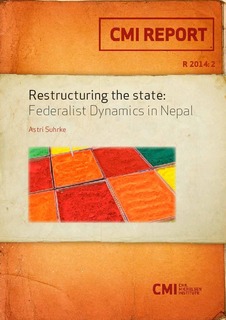| dc.description.abstract | Since the end of the civil war in 2006, Nepal has been on the edge of a peaceful but truly revolutionary change to restructure the state along federal lines. The issue has dominated the political discourse, wrecked the first attempt to write a permanent, new constitution, fuelled deep divisions, sparked violence and inflamed the political discourse. Demands for federalism based on ethnic and regional identity have deep roots; they are not going to go away and, in some form, need to be accommodated. Yet the opposition remains formidable as political and economic elites fight to preserve their long-standing privileged position in the existing centralized state structure. In this situation, what is required to secure a peaceful negotiated transition? What are the lessons from other countries that have negotiated a federal bargain? This report is part of a joint project between the Chr. Michelsen Institute and the Department of Sociology,Tribhuvan University on social change in Nepal. | |
